We are going to compare 4 handheld thermal cameras in 3 different form factors: Smartphone attachement, Pocket and handheld thermal camera. These are the Flir One Pro, a smartphone thermal imager for Android and iPhone, the Flir TG267 a handheld thermal camera in the style of a laser thermometer and the Flir C5 and Seek Shot Pro which are pocket thermal cameras
We will compare them on all aspects from image quality, resolution, connectivity to baterry life. Here is our comparison table and review:
We will compare them on all aspects from image quality, resolution, connectivity to baterry life. Here is our comparison table and review:
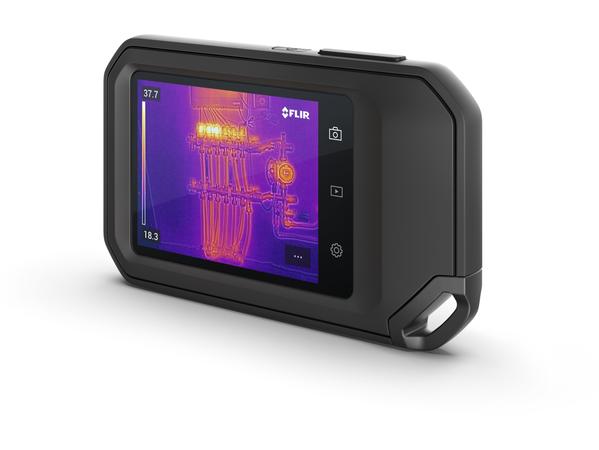
| Product | Type | Resolution | Battery capacity | Waterproof | LCD screen | Price |
|---|---|---|---|---|---|---|
FLIR C5 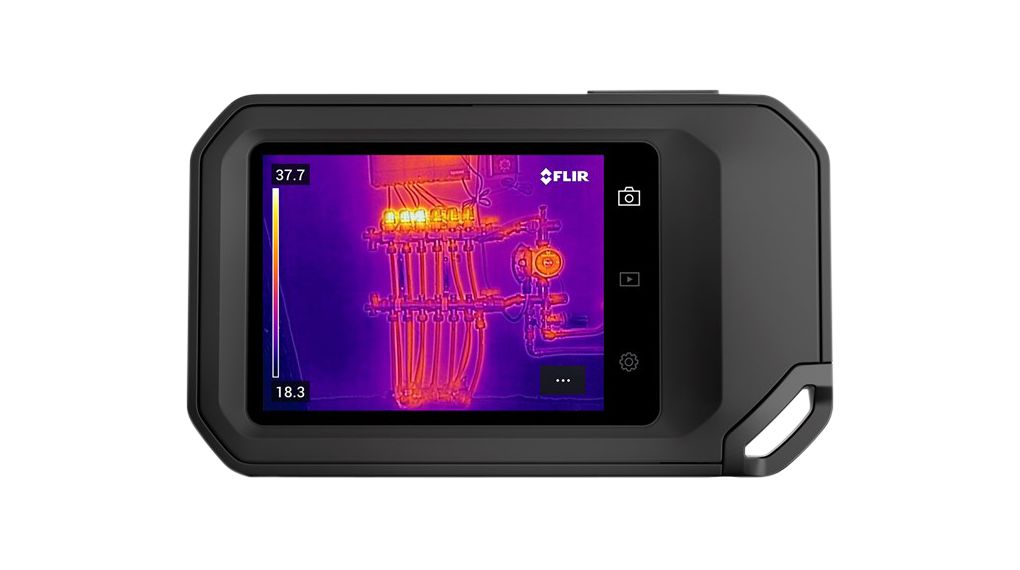 | Handheld | 160 x 120 | 4 hours | Yes | 3.5″ | Click for more info |
FLIR ONE Pro 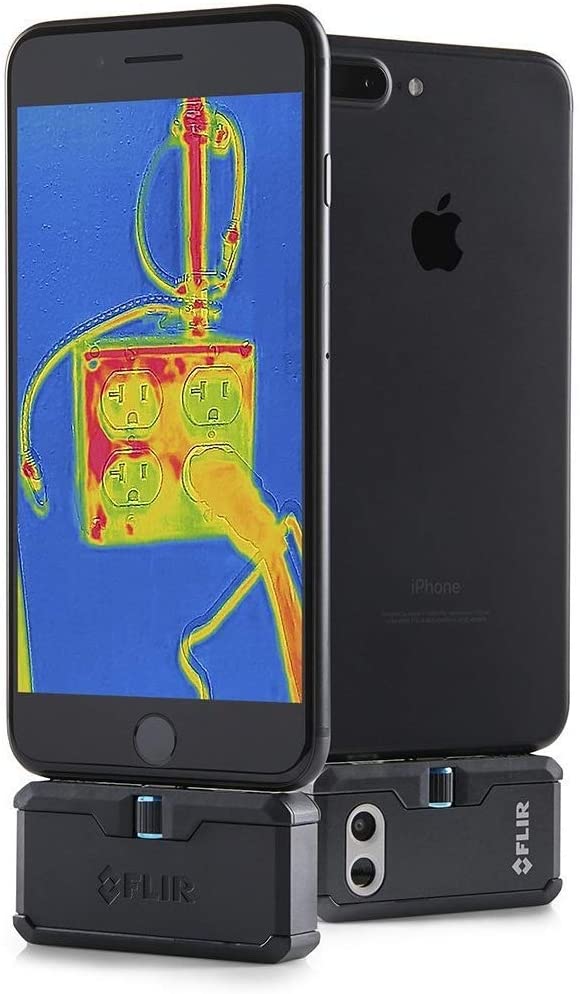 | Smartphone (2 different versions – Android & iOS) | 160 x 120 | 45 minutes | No | Uses Smartphone screen | Click for more info |
FLIR TG267 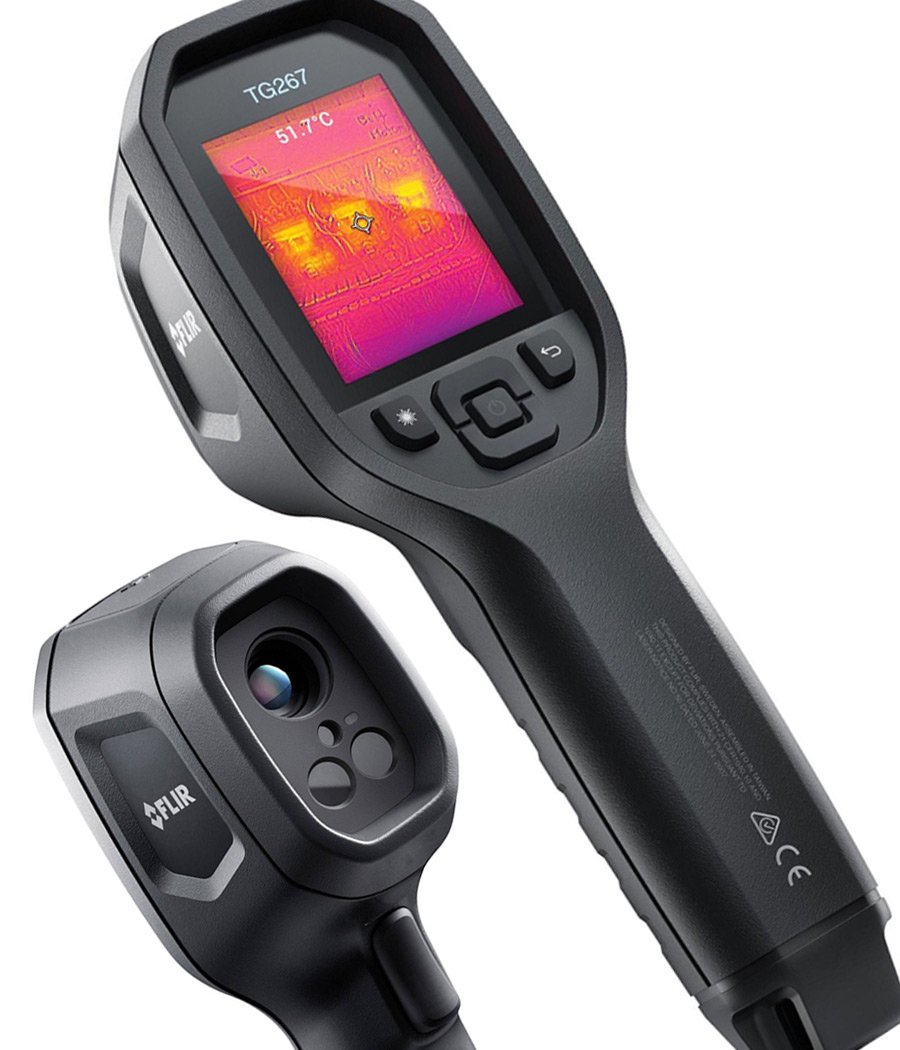 | Handheld | 160 x 120 | 5 hours | Yes | 2.4″ | Click for more info |
Seek ShotPro 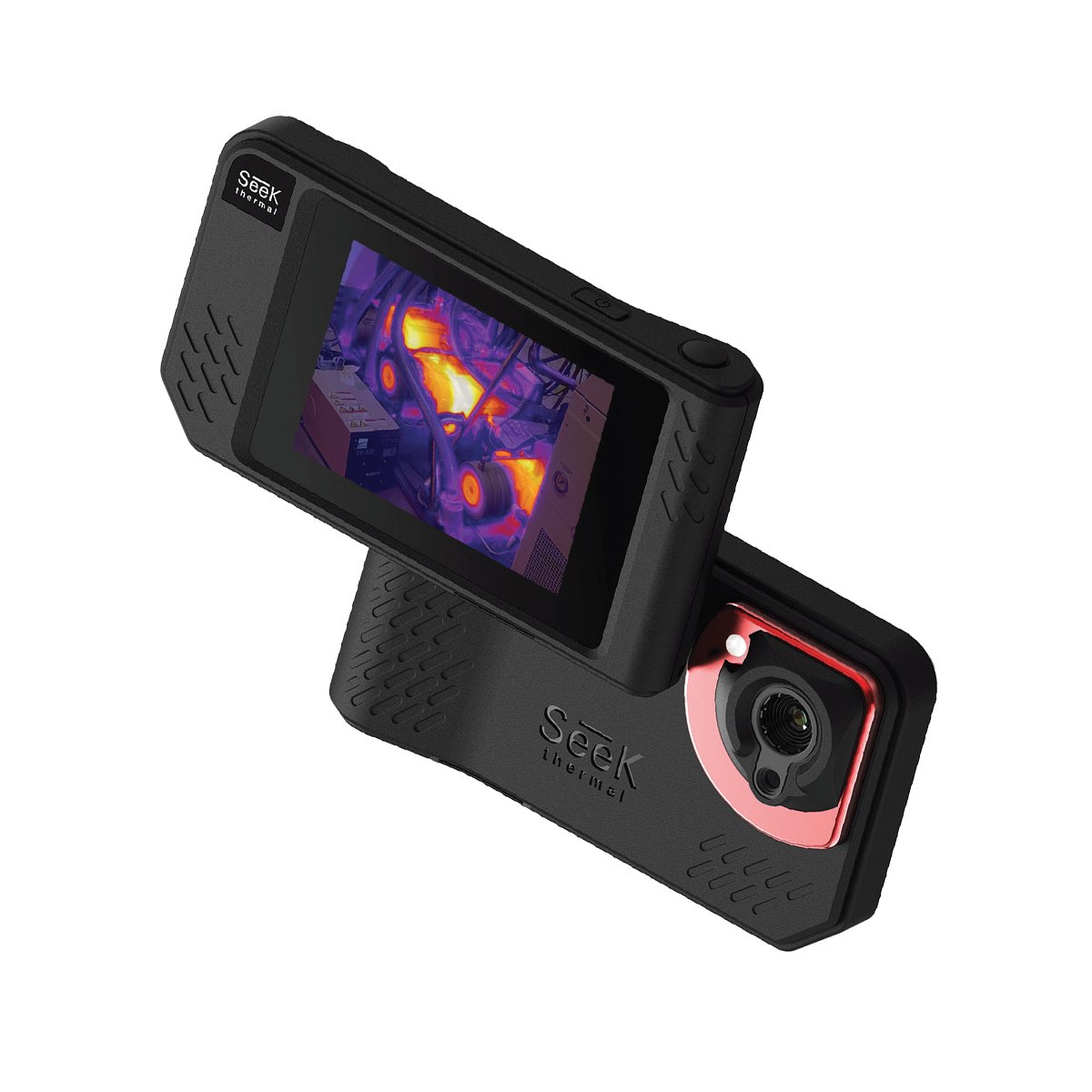 | Handheld | 320 x 240 | 4 hours | Yes | 3.5″ | Click for more info |
Let’s have a look at each product in particular.
FLIR C5
| Product | Type | Resolution | Battery capacity | Waterproof | LCD screen | Price |
|---|---|---|---|---|---|---|
FLIR C5  | Handheld | 160 x 120 | 4 hours | Yes | 3.5″ | Click for more info |
The camera comes with 3 types of wired and wireless connectivity in the form of Wi-fi, Bluetooth and USB-C. And it makes great use of these connection options, not limiting itself just to data transfer or smartphone tethering because it can connect and sync the digital images with Flir’s newest Cloud platform called Flir Ignite. As of 2020, this is the first Cloud platform specially designed for thermal images. The infrared camera also makes use of the wireless connection to update its firmware automatically via OTA updates.
Then we get to the image quality and here the camera ticks most boxes because it has a thermal vision sensor with an infrared resolution of 160 x 120 pixels that outputs 19,200 pixels in total coupled together with a visual camera for MSX image enhancement. It has several image modes, allowing you to view the infrared image, the visual image, a combination of both using MSX or picture-in-picture.
In terms of its temperature measurement capabilities, it performs better than most cameras with a temperature range from -4 to 752°F (-20 to 400°C) with an ultra-low thermal sensitivity of 0.05°C (Lower is better here because it means that it will react to a smaller temperature difference).
All the images are stored in JPEG format with 14-bit temperature data for all the pixels. The internal memory can hold up to 5000 of those thermal images.
The camera has a large 3.5″ LCD color touchscreen that is responsive and easy to use, eliminating the need for buttons. It is also equipped with a high-capacity battery that ensures a 4-hour battery life.
But its not just the inner components of the camera that perform well, its also the outside enclosure which has an IP 54 rating for being waterproof up to the extent that it can withstand heavy splashes and dustproof. It can also withstand a 2 meter drop and still function properly. As is the case with most Flir thermal imaging cameras
This model is the succesor to the Flir C2 thermal imaging camera and C3. Just like with all flir thermal cameras, it benefits from a 2-10 warranty system where the thermal sensors are covered for 10 years.
FLIR ONE Pro
| Product | Type | Resolution | Battery capacity | Waterproof | LCD screen | Price |
|---|---|---|---|---|---|---|
FLIR ONE Pro  | Smartphone (2 different versions – Android & iOS) | 160 x 120 | 45 minutes | No | Uses Smartphone screen | Click for more info |
It uses your smartphone’s internal memory to store photos and the screen together with the mobile app for operating it and this allows it to be the cheapest thermal imaging system in our comparison.
Flir C5 vs Flir One Pro
The main difference is in the form factor, the Flir One Pro needs a smartphone to function and uses its touchscreen and internal memory, while the C5 can work standalone.The Flir One Pro has a higher 0.07 C thermal sensitivity compared to the 0.05 C on the C5 and also a much lower battery life of just 45 minutes compared to the 4 hours you get on the C5. The One Pro is also not waterproof or dustproof like the C5.
Both automatically update their software, the Flir One app is continuously updated in the Play Store and App Store while the C5 gets OTA updates. However, as of writing this article the Flir One Pro does not have automatic access to the Flir Ignite Cloud platform to sync the thermal images.
Even though both have the same infared resolution of 160 x 120 pixels, we found the images on the C5 to be sharper and more detailed.
FLIR TG267
| Product | Type | Resolution | Battery capacity | Waterproof | LCD screen | Price |
|---|---|---|---|---|---|---|
FLIR TG267  | Handheld | 160 x 120 | 5 hours | Yes | 2.4″ | Click for more info |
It has an IP54 rating for being dustproof and waterproof. It was created for HVAC professionals to help in their home inspections, building inspections and with things like leak detection, air flow inspection or insulation checks. It’s an easy-to-use device, you don’t need infrared training to start capturing thermal images.
It has a 4GB of memory for image storage which should be more than enough because the images format doesn’t contain radiometric thermal data for each pixel in the hot spots you are measuring and provides a 5-hour battery life.
This particular model is as good as you can get from Flir. The next ones in performance and price are the E-series professional thermal cameras with WiFi which include the Flir E4, Flir E6 and Flir E8. In terms of price, below you will find the entry-level models which include the Flir TG165 spot thermal imaging camera and TG165X.
Flir TG267 vs Flir C5
These compact thermal imaging cameras are different in terms of form factor, while the TG267 is designed like a laser thermometer with a trigger button, the C5 is built like a digital camera and has a touchscreen which has a much larger 3.5″ diagonal compared to the 2.4″ color screen on the TG267.The C5 has additional Wi-fi and Cloud connectivity together with OTA firmware updates, powerful features which the TG267 does not have.
You can also record videos on the Flir C5, something which cannot be done with the TG267. The battery life is a bit longer on this handheld thermal imager because it manages to squeeze 5 hours of use out of its rechargeable battery instead of just 4 hours on the C5.
Flir One Pro vs Flir TG267
The main difference between the Flir TG267 is a handheld camera while the Flir One Pro is a thermal imaging camera for smartphones.The range of temperature that each of these cameras can measure differs but very slightly. The Flir One Pro can measure from -4 to 752°F( -20 to 400 C) while the TG267 can measure from -13°F to 716°F(-25°C to 380°C ).
The battery on the TG267 lasts much longer even up to 5 hours of continuous use while the One Pro only has a 45-minute battery life. The TG267 has a 4GB internal memory while the One Pro doesn’t have any kind of memory but makes use of your smartphone storage.
Another important difference is in the fact that the Flir TG267 has an IP54 rating for being waterproof and dustproof while the Flir One Pro has no kind of protection.
Seek ShotPro
| Product | Type | Resolution | Battery capacity | Waterproof | LCD screen | Price |
|---|---|---|---|---|---|---|
Seek ShotPro  | Handheld | 320 x 240 | 4 hours | Yes | 3.5″ | Click for more info |
Seek Shot Pro vs Flir C5
The main difference between the Flir C5 and Seek ShotPro is the infrared resolution. The Seek camera has an thermal vision sensor with a 320 x 240 pixels IR resolution while the C5 only has a 160 x 120 sensor which means the Seek offers more than 3 times the amount of detail.The Flir C5 compact thermal camera does better in temperature measurement however with a wider thermal scope from -4 to 752°F (-20 to 400°C) compared to just -40 to 626 °F (-40 to 330° C) on the Seek Thermal ShotPro and also a better thermal sensitivity of 0.05 C for the C5 compared to 0.07 C on the ShotPro.
And then there is the fact that the Flir C5 also brings additional Bluetooth connectivity, the ability to connect and sync the thermal images to a Cloud platform and OTA updates, things which this thermal vision camera can’t do.
Both of these powerful tools can record video, however the Seek Shot Pro can also stream video via Wi-fi while the C5 can only do that via USB cable. In terms of image blending of the visible light image and infrared thermal image, we prefer the MSX image enhancement technology to the SeekFusion algorithm used by the Seek thermal camera. In addition, there is the Flir Tools reporting software which you can use with the C5 to create quick thermal reports.
Seek also makes the Seek Reveal thermal camera which is a pro tool suited to measuring temperatures at longer distances which can also be used as a night vision device to spot wildlife.
Our Score
